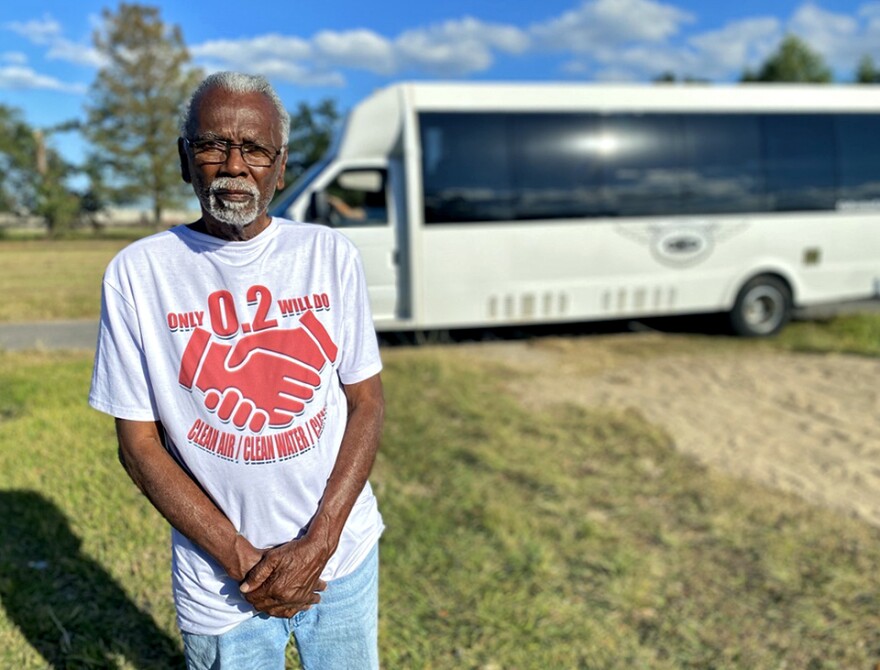Louisiana will receive more than $2 million to monitor air pollution from the Environmental Protection Agency. On Thursday, the agency announced that it will funnel more than $50 million into expanding air monitoring within communities dealing with pollution nationally.
The money will go fund 132 projects proposed across the country, including five in Louisiana. Officials and advocates said building out community air monitoring will help give residents a clearer picture of what’s in the air they breathe.
In a press conference on Wednesday, EPA Administrator Michael Regan said the move advances the Biden administration’s commitment to invest in areas that have suffered decades of environmental injustice.

Research has shown that low-income, Black, brown and Indigenous communities are disproportionately exposed to environmental hazards, including toxic air pollution.
“Empowering our communities to gather quality data about the air they breathe will help ensure dozens of overburdened communities have the tools they need to better understand the air quality challenges in their neighborhoods, and will protect people from the dangers posed by air pollution,” Regan said.
About $20 million will come from the 2021 American Rescue Plan, and another $32 million was allocated by the Inflation Reduction Act passed in August.
After years of fighting against pollution from a nearby industrial plant, Robert Taylor, an advocate and resident in St. John the Baptist Parish, welcomed the influx of money to improve local air monitoring.
His parish could benefit from a $498,000 community air monitoring program led by a New Orleans-based nonprofit, the Deep South Center for Environmental Justice.
“There is before us now the opportunity to alleviate some of the long-term problems we have, that we have struggled against without any kind of positive reaction from any government agency,” Taylor said during the press conference.

In Reserve, Taylor and his neighbors have called for Denka Performance Elastomers, a neoprene manufacturing plant, to lower its emissions of chloroprene, a likely carcinogen, since 2016. Though the plant, in coordination with the state Department of Environmental Quality, has lowered its emissions, it hasn’t been enough to reduce residents’ exposure to levels deemed acceptable by the EPA as of October.
Two Louisiana state agencies are currently under a federal investigation by the EPA over whether their failure to lower emissions and inform residents of the chemical’s health risk violate federal law. After going so long without results, Taylor said residents are reinvigorated.
“The onslaught of this chemical industry and its resulting devastation in terms of our health was being ignored, and the people here now do have hope,” Taylor said.
Regan visited Taylor’s community in St. John during his “Journey to Justice” tour across Mississippi, Louisiana and Texas in November 2021. The EPA administrator said eight of the 132 projects funded are in areas he toured.
In addition to funding the Air Toxics Patrol in St. John, other Louisiana projects include:
- $500,000 to the Louisiana Environmental Action Network to gather data in nine zip codes within the state’s industrial corridor running along the Mississippi River from Baton Rouge into New Orleans.
- $902,213 to the Louisiana Department of Environmental Quality for air monitoring in St. James Parish as well as polycyclic aromatic hydrocarbons monitoring in Alexandria and Pineville.
- $498,480 to the LSU Health Foundation for a citizen science project in the historic New Orleans neighborhood of Treme.
The money for community air monitoring marks the first grants funded by the Inflation Reduction Act to flow out of the agency, Regan said.
Regan didn’t guarantee that the one-time grants would be renewed or replenished, noting that money to continue the air monitoring programs would need to come from another source.
“As we continue to move forward and look at new opportunities down the road, it will depend on which community is capable of applying for what grants in the future that will determine where they get future resources,” Regan said.






